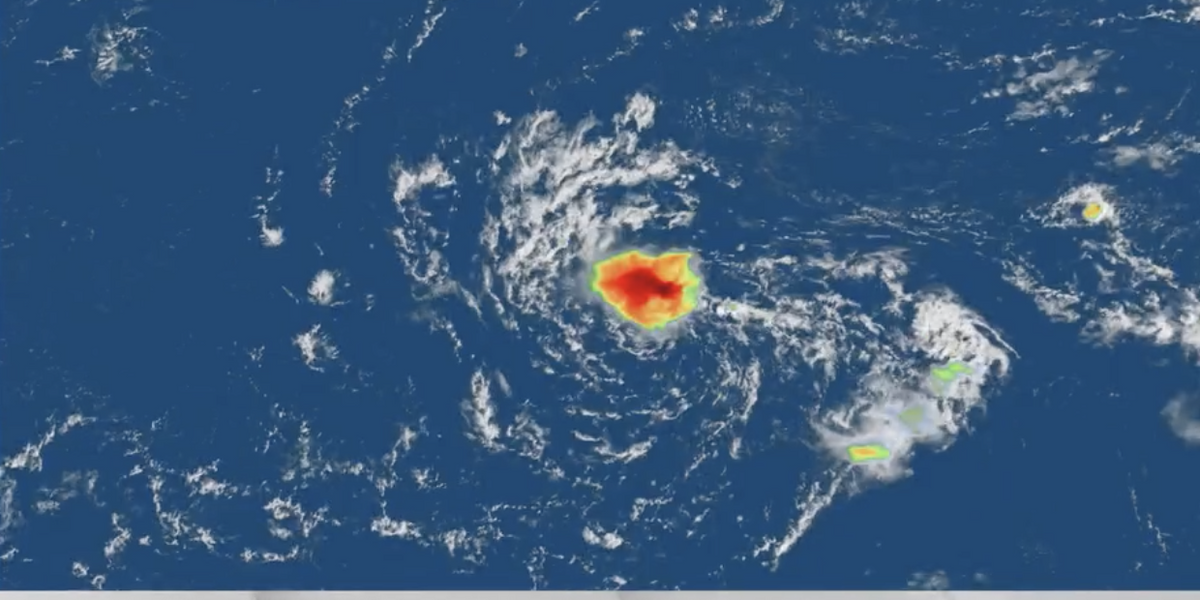Atlantic Disturbance: The Potential Rise of Tropical Storm Nadine
As the Atlantic Ocean stirs with a new disturbance, meteorologists are on high alert for the potential development of Tropical Storm Nadine. Just days after Hurricane Milton wreaked havoc across Florida, the weather patterns in the Atlantic are once again showing signs of activity, raising concerns for the upcoming weeks of hurricane season.
The Current Situation
A significant area of low pressure is currently forming in the central tropical Atlantic, characterized by a cluster of thunderstorms—a hallmark of a developing tropical system. While there is a possibility that this disturbance may not reach storm strength, experts are closely monitoring its progress, especially given the recent history of intense hurricane activity in the region.
Robb Ellis, a meteorologist with The Weather Channel, stated, “There is one wave that we are watching, and over the next week or so it has a medium chance of developing as it continues pushing to the west, and a little closer to the Lesser Antilles.” This statement underscores the urgency of the situation, as the disturbance could evolve into the next tropical system as it approaches the Caribbean.
Historical Context of Hurricane Activity
The Atlantic hurricane season has been particularly tumultuous this year, with Florida still reeling from the aftermath of Hurricane Milton, one of the most powerful storms to hit the region in recent memory. Milton followed closely on the heels of Hurricane Helene, creating a challenging environment for recovery efforts. The cumulative damage from these storms is projected to exceed $200 billion, a staggering figure that highlights the severity of the current hurricane season.
Jim Dale, a meteorologist for British Weather Services, emphasized the ongoing threat, stating, “It is still a case of looking over our shoulders, with several weeks left of hurricane season.” This sentiment reflects the precarious nature of the situation, as the potential for further storms looms large.
The Path Ahead
As the disturbance moves westward, it is expected to encounter conditions that are not particularly favorable for tropical development. However, it is not uncommon for tropical systems to gain strength as they approach the Antilles. The next name on the list for tropical storms in the Atlantic is Nadine, and meteorologists are keenly aware of the implications this could have for the U.S. coastline.
The National Oceanic and Atmospheric Administration (NOAA) has indicated that an easterly flow off the Gulf of Mexico will contribute to showers and thunderstorms across parts of the Western Gulf Coast. This weather pattern could further complicate recovery efforts in Florida, which is still dealing with the aftermath of recent storms.
The Impact of Warm Waters
One of the key factors contributing to the heightened hurricane activity this season is the unusually warm waters in the Gulf of Mexico. Unlike typical hurricane formations that originate off the coast of Africa, both Milton and Helene formed in the Gulf, a deviation from the norm that has raised concerns among meteorologists.
Ellis noted the staggering amount of rainfall that has already impacted Florida, stating, “Torrential downpours during last week’s hurricane dumped more than a foot of rain across Florida.” This deluge has flooded the region with an estimated volume of water equivalent to filling 5 million Olympic swimming pools—approximately 3.4 trillion gallons.
Conclusion
As the Atlantic disturbance continues to evolve, the potential for Tropical Storm Nadine adds another layer of complexity to an already challenging hurricane season. With meteorologists closely monitoring the situation, the focus remains on preparedness and response as communities in Florida and beyond brace for the possibility of more severe weather. The coming days will be critical in determining the trajectory of this disturbance and its potential impact on the Caribbean and the U.S. coastline. As always, staying informed and prepared is key to navigating the unpredictable nature of hurricane season.
